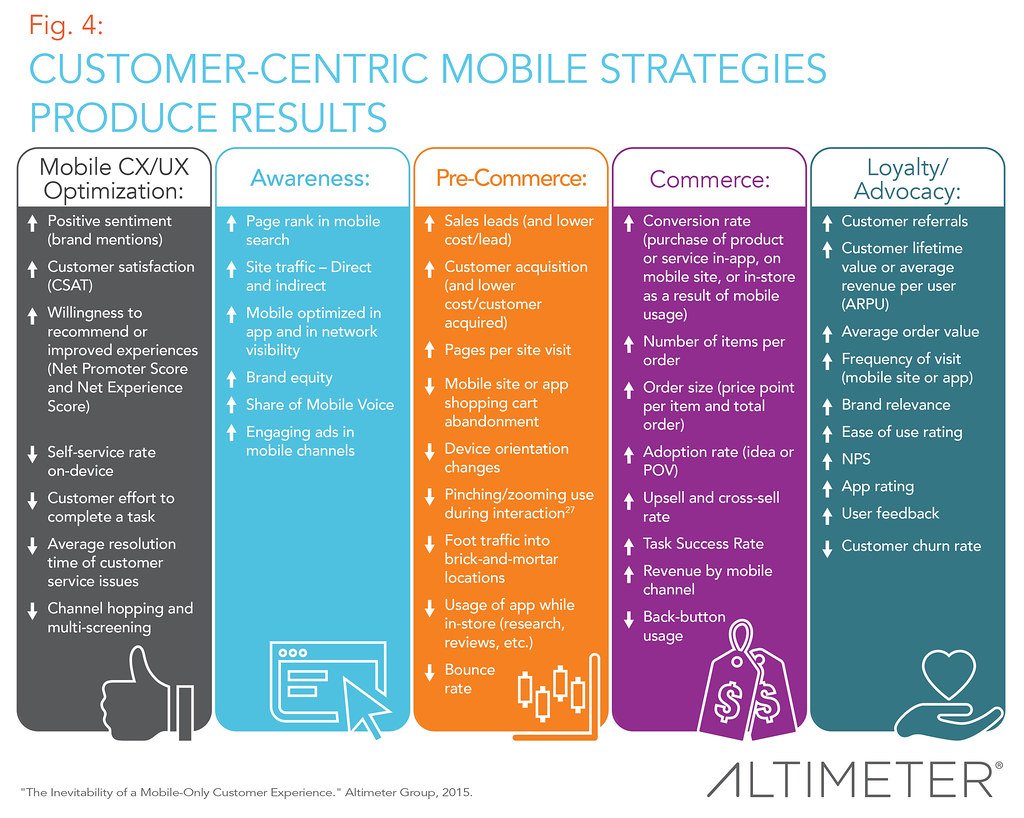In a world where consumer choices are ever-expanding, businesses are constantly striving to stay ahead of the game and maximize their sales potential. The art of upselling, an age-old technique with a modern twist, provides a unique opportunity for businesses to boost their sales and delight their customers. Welcome to the captivating world of cross-selling, where creativity meets neutrality, as we embark on a journey to unravel the secrets behind this powerful sales strategy. Join us as we delve into the depths of this captivating art, exploring the myriad ways businesses can effectively increase their revenue while simultaneously enhancing customer satisfaction. Prepare to be inspired, intrigued, and enlightened as we unlock the potential of upselling through cross-selling, one sale at a time.
Table of Contents
- The Art of Upselling: Leveraging Customer Preferences to Increase Sales
- Creating an Effective Cross-Selling Strategy: Uncovering Hidden Sales Opportunities
- Psychology Behind Successful Upselling: Understanding Customer Behavior
- Mastering the Upselling Techniques: Proven Methods to Maximize Revenue
- Q&A
- In Retrospect

The Art of Upselling: Leveraging Customer Preferences to Increase Sales
In the world of sales, one strategy that can have a huge impact on your bottom line is upselling. Upselling is the art of persuading a customer to purchase a higher-priced product or add-on to their original purchase. It requires a deep understanding of your customer’s preferences and needs, as well as a skillful approach to presenting additional options that enhance their overall experience.
So, how can you leverage customer preferences to effectively upsell and boost your sales? Here are a few tips to get you started:
- Identify your customers’ pain points: Take the time to understand what challenges or problems your customers are facing. This will allow you to offer solutions that address their specific needs and provide added value.
- Recommend complementary products: Analyze your product offerings and identify items that naturally pair well together. For example, if you sell cameras, you can recommend lenses, tripods, or memory cards that enhance the customer’s photography experience.
- Showcase the benefits: When presenting an upsell, focus on the benefits it brings to the customer rather than just highlighting the price difference. Whether it’s improved functionality, time savings, or enhanced results, clearly communicating the value of the upsell will make it more enticing.
- Create irresistible bundles: Another effective upselling technique is combining multiple products into a bundle at a discounted price. This not only increases the perceived value for the customer but also encourages them to spend more without feeling like they’re overspending.

Creating an Effective Cross-Selling Strategy: Uncovering Hidden Sales Opportunities
Creating an effective cross-selling strategy is crucial for any business looking to boost their sales and maximize customer value. Cross-selling involves offering customers complementary products or services that complement their initial purchase, creating additional revenue opportunities. By uncovering hidden sales opportunities, businesses can tap into the potential of their existing customer base and increase customer loyalty. Here are some key tips and insights to help beginners navigate the art of upselling through cross-selling:
1. Understand your customers: Start by analyzing your customer data to identify common purchasing patterns and preferences. This information will provide valuable insights into which additional products or services are most likely to resonate with your customers. For example, if you run an e-commerce store selling fitness apparel, customers who frequently purchase workout clothing may also be interested in fitness accessories such as resistance bands or yoga mats.
2. Bundle related products: Creating bundles or packages of related items can incentivize customers to make additional purchases. This technique not only adds value to the customer’s overall experience but also increases the average order value. For instance, a tech company selling laptops could create a bundle that includes a laptop case, a wireless mouse, and a laptop cooling pad. By offering these items together at a discounted price, customers are more likely to see the value in purchasing the entire bundle rather than individual items.
3. Leverage personalized recommendations: Utilize the power of a well-designed recommendation engine to display personalized product recommendations based on a customer’s purchase history and browsing behavior. By offering tailored suggestions, you can increase the chances of cross-selling complementary products that are genuinely interesting to the customer. Take Amazon as an example; their “Customers who bought this also bought” section showcases a range of related items based on previous purchases, tempting customers to add more items to their cart.
4. Educate your customers: Sometimes, customers may not be aware of the additional products or services that could enhance their initial purchase. By providing educational content such as blog posts, videos, or comparison guides, you can inform and inspire customers to explore additional options. For instance, a cosmetics brand could create a guide on how to achieve a specific makeup look and recommend products that would help customers achieve it. This not only increases the chances of cross-selling but also positions your brand as a trusted advisor.
Remember, building an effective cross-selling strategy requires a deep understanding of your customers’ needs and preferences. By implementing these techniques and continually analyzing your data, you can uncover hidden sales opportunities and significantly boost your overall revenue.
Psychology Behind Successful Upselling: Understanding Customer Behavior
The Psychology Behind Successful Upselling
Understanding customer behavior is key to mastering the art of upselling and boosting sales through cross-selling. While many businesses focus solely on making a sale, experts know that the true power lies in building lasting relationships with customers. By tapping into the psychology behind successful upselling, you can not only increase your revenue, but also create a positive and fulfilling experience for your customers.
1. The Power of Personalization
People love feeling special and valued, so personalizing your upselling approach can make a world of difference. By understanding your customers’ preferences, previous purchase history, and needs, you can truly tailor your suggestions to their individual requirements. Whether it’s recommending complementary products based on their previous purchases or providing tailored recommendations through data analysis, personalization can create a sense of trust and connection that drives customers to say “yes” to your upsell offers.
2. The Influence of Social Proof
Have you ever been swayed to make a purchase because you saw others doing the same? That’s the power of social proof. To successfully upsell, leverage the influence of social proof by showcasing popular or recommended items that others have purchased alongside the main product. For instance, if a customer is buying a camera, you could highlight that many customers who bought that camera also purchased a high-quality lens. By showing that others have made similar choices and experienced satisfaction, you create a powerful incentive for customers to consider additional purchases.

Mastering the Upselling Techniques: Proven Methods to Maximize Revenue
When it comes to growing your sales and maximizing revenue, mastering the art of upselling is a skill worth investing in. Through effective cross-selling techniques, you can entice customers to upgrade their purchases, resulting in increased average order values and a boost in your overall sales numbers. Here, we will explore proven methods that can help you harness the power of upselling and elevate your business to new heights.
1. Create irresistible bundles: Package products or services together in a way that adds value and encourages customers to spend more. For example, a hotel could offer a “Stay and Dine” package, where guests receive a discounted meal at the hotel’s restaurant when booking a room.
2. Personalize recommendations: Use data and customer insights to tailor your upselling offers to each individual. Show customers that you understand their preferences and can provide them with tailored recommendations that enhance their experience. For instance, an online retailer can suggest related products based on the customer’s browsing or purchase history.
Q&A
Q: What exactly is cross-selling and how does it differ from upselling?
A: Cross-selling is a sales technique that involves offering additional products or services related to a customer’s initial purchase. It differs from upselling, which refers to encouraging customers to upgrade or buy a more expensive version of what they are already considering.
Q: Why is cross-selling considered an art form?
A: Cross-selling requires a delicate balance of understanding customer needs, identifying complementary products, and suggesting them in a way that enhances the overall shopping experience. Like an artist skillfully blending colors on a canvas, a salesperson must master the art of persuasive suggestion without being pushy or intrusive.
Q: How does cross-selling benefit both businesses and customers?
A: For businesses, cross-selling helps boost revenue and customer loyalty. By offering additional products or services, companies can increase their average transaction value and create long-term relationships with customers. Customers, on the other hand, benefit from the convenience of finding related products in one place, saving time and effort in their search.
Q: What are some effective strategies to cross-sell successfully?
A: Understanding your customer’s needs and preferences is crucial. By analyzing purchase history or utilizing data analytics, businesses can predict what complementary products are likely to be of interest. Additionally, creating personalized recommendations and utilizing suggestive selling techniques, such as bundling related items, can significantly enhance cross-selling success.
Q: How can businesses avoid the risk of appearing pushy or intrusive when cross-selling?
A: The key lies in the art of subtlety. Rather than pressuring customers into purchasing additional items, businesses should focus on informing them about relevant products, highlighting their benefits, and explaining how they enhance the original purchase. By adopting a consultative approach and respecting customer preferences, businesses can avoid crossing the line into pushiness.
Q: What role does effective communication play in cross-selling?
A: Communication is the paintbrush that brings the art of cross-selling to life. Sales representatives should possess excellent listening skills, empathy, and a genuine interest in helping customers find the right products. By actively engaging in conversation, providing honest advice, and answering queries, businesses can build trust and increase the likelihood of successful cross-selling.
Q: Can cross-selling be implemented in different industries, or is it limited to specific sectors?
A: Cross-selling can be applied across various industries, provided there are related products or services to offer. Whether it’s suggesting a charger for a newly purchased smartphone or recommending accessories to complement a clothing purchase, the art of cross-selling can seamlessly weave its way into the fabric of any business.
Q: Are there any potential challenges in implementing a cross-selling strategy?
A: Yes, there can be challenges involved in cross-selling. One common challenge is striking the right balance between customization and privacy. While personalization is crucial for success, businesses must be cautious not to infringe upon customer privacy or make uncomfortable assumptions. Additionally, training sales teams to effectively cross-sell without appearing pushy requires ongoing effort and skill refinement.
Q: How can businesses measure the success of their cross-selling efforts?
A: Tracking key performance indicators (KPIs), such as customer satisfaction, average transaction value, and the percentage of cross-sold items, offers insights into the effectiveness of cross-selling strategies. Conducting surveys or analyzing feedback can also provide valuable information about customers’ perception and experiences with cross-selling practices.
Q: What is the future of cross-selling in the digital era?
A: In the ever-evolving digital landscape, cross-selling is playing an increasingly significant role. With the assistance of advanced algorithms and AI-driven insights, businesses can analyze vast amounts of customer data to offer more accurate product recommendations. Furthermore, as e-commerce continues to thrive, online retailers can effortlessly implement dynamic cross-selling strategies, tailoring suggestions in real-time to meet individual buyer preferences.
In Retrospect
In the captivating realm of commerce, where innovation and strategy intertwine, one technique stands out—a stroke of brilliance known as the art of upselling. It is an enchanting dance between consumer desires and profit margins, where whispers of persuasion lead to soaring sales. We have unraveled the secrets of this mysterious art and discovered the key to unlocking the door of success. Through cross-selling, we have witnessed businesses leaping to new heights, captivating the hearts and wallets of their customers.
As we draw our journey through the art of upselling to a close, we leave you with the magic of possibilities, stirring in the air. Picture a world where seamless experiences meet individual needs, where each step in a customer’s shopping journey unveils delightful surprises. With the art of cross-selling, the mundane transforms into the extraordinary, and customers embrace products that enrich their lives in ways they never deemed possible.
But let us not forget the essence of this enchantment—its neutrality. In recognizing that the art of upselling is not a manipulative force, but rather a delicate dance between consumers and sellers, we find ourselves in a world where both parties thrive. The heart of upselling lies in understanding the customers’ desires, extending their journey with thoughtful recommendations, and ultimately, adding value to their lives.
As we bid farewell to this exploration, we encourage you to embrace the art of upselling and let it become a part of your business’s repertoire. Go forth with an open mind, a creative spirit, and a commitment to delivering exceptional experiences. For within the art of upselling lies undiscovered potential—an untapped wellspring of growth, customer loyalty, and prosperity.
May you embark on this journey with confidence, armed with the knowledge of cross-selling’s remarkable ability to boost sales. Let your business soar to new heights—one upsell at a time.

